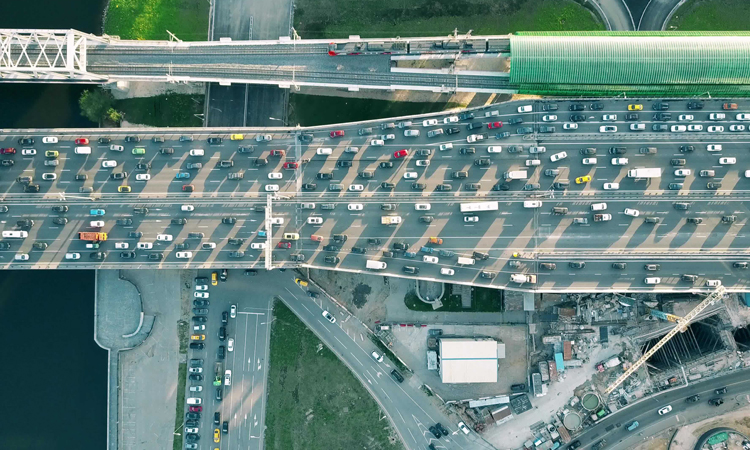Public value and effective governance in MaaS
- Like
- Digg
- Del
- Tumblr
- VKontakte
- Buffer
- Love This
- Odnoklassniki
- Meneame
- Blogger
- Amazon
- Yahoo Mail
- Gmail
- AOL
- Newsvine
- HackerNews
- Evernote
- MySpace
- Mail.ru
- Viadeo
- Line
- Comments
- Yummly
- SMS
- Viber
- Telegram
- Subscribe
- Skype
- Facebook Messenger
- Kakao
- LiveJournal
- Yammer
- Edgar
- Fintel
- Mix
- Instapaper
- Copy Link
Posted: 29 November 2018 | Ruud van der Ploeg - EMTA, Thomas Geier - EMTA | No comments yet
Intelligent mobility, in particular the concept of Mobility-as-a-Service, is gaining a lot of attention in the contemporary debate about the future of mobility. In this article, which draws on EMTA’s current research on MaaS, Ruud van der Ploeg, EMTA General Secretary, and Thomas Geier, EMTA Research Assistant, address the challenge of effective governance.


Intelligent mobility can be described as a combination of system thinking and the application of technology, and has produced a variety of promising concepts from Mobility-as-a-Service, to automated vehicle technology, electrification of transport and increasingly intelligent infrastructure.
The transition towards intelligent mobility is expected to reduce the overall cost of transportation and need for additional infrastructure. Silos and path dependencies in planning are expected to diminish, creating room for innovative solutions and business models that aim to service our society’s need for movement in a more intelligent and resource-conscious way. The intelligent mobility transition has the potential to become a movement with as equivalent a reach and significance as the mass adoption of motor vehicles, which is considered to be the major socio-economic transformation of the 20th century.
Assessing the challenge
Considering the potential wide-ranging consequences, it becomes crucial to understand the role of the public domain and examine what governance challenges and policy changes need to be addressed in order to comprehend the intelligent mobility transition and account for its implications. The intelligent mobility discussion is primarily producer-led by the technology sector at the moment, which may create a disconnect between the proclaimed bright future of intelligent mobility and the actions of the players pursuing the transitions. Certain players may, for example, have an interest in inducing additional individual journeys for profit generation reasons. A sense of urgency becomes furthermore apparent when considering the public domain’s historic reaction to the automobility transition in the last century. It took several decades for authorities to address the issues and profound impacts of automobility on the economy, environment and society with its negative externalities (pollution, road safety, resource and space depletion) arguably still not being accounted for properly.
To let the transition evolve in a way that creates more rather than less public value, the public domain needs to understand and evaluate the potential implications of new mobility concepts and measures. It is thereby important to not only consider these implications at the introduction phase, when only a very small proportion of early adopters make regular use of novel measures and services. When the majority, rather than the minority, of users begin to use these novel systems, their potential impacts on society may become disadvantageous.
Effective and public value-led governance in mobility therefore needs to prevent anti-competitive behaviour and avoid the conditions of monopolisation. It needs to provide clear regulation concerning the allocation of street space and the wider public realm to commercial organisations (e.g. parking spaces reserved for car-sharing). Additionally, the varying degrees of spatial uptake of mobility services must be addressed to prevent spatial discrimination and assure that the transition does not take place only in the very centre of cities. Effective regulation must furthermore prevent data and information asymmetry at the expense of governments and authorities. Data must be considered the most valuable commodity in intelligent mobility as it allows the adequate matching of supply and demand, thus influencing the potential for surplus creation. However, in order to adjust infrastructure effectively, the public domain needs access to certain data and information about the mobility system which is at risk of remaining hidden in a private domain.
Adding MaaS to the mix
These same challenges also apply to the concept of MaaS. Within MaaS, service providers offer mobility solutions through a seamless integration of different public and commercial transport provisions according to the general preferences and journey-specific user needs. The service is delivered through a digital interface that permits trip planning, reservations, on-route support, payments and trip alteration, which enables customers to source and manage their total mobility needs on demand. MaaS is expected to increase overall traveller satisfaction and induce choices that better contribute to general societal goals for efficient and sustainable transport, which explains the concept’s hype-like status amongst researchers and practitioners.
MaaS is based on an ecosystem understanding with several stakeholder roles vital to the production and delivery of integrated mobility services. The current mobility system set up sees various providers of different transport modes exist in parallel – each maintaining their respective value chain to customers. MaaS, however, accommodates two new roles, suggesting a four-level value chain system. MaaS makes use of a variety of transport services available in a city or region. The transport supply is the first operational level of MaaS, comprising various public and commercial operators who supply assets and service capacity. To integrate these separate modes, all service-relevant data needs to be accessible. Data-sharing and integration may be compiled in a variety of ways, depending on the availability and deployment of technological solutions.
The second operational level of MaaS, therefore, depicts the technical integration of data and business requirements. Based on this data, and respective access to the variety of transport modes, MaaS provisions can be designed, marketed and delivered through a digital interface, which is depicted by the third level – the service provision level of MaaS. Those that use MaaS are illustrated in the fourth layer of the ecosystem, the user level. Depending on the market set-up scenario, different user groups with different needs and preferences (e.g. individuals, business travellers, households, etc.) may be attracted to different MaaS service providers who may differentiate their offerings according to market segmentation.


Public-private partnerships, even in MaaS, look to be the best way to both serve the public whilst at the same time supporting advances in intelligent mobility
MaaS configuration
The distribution of the various roles in the MaaS ecosystem amongst public and commercial, incumbent and new entrant organisations of the transport system, creates a variety of scenarios for the set-up of MaaS. These scenarios differ in their response to the earlier introduced intelligent mobility governance challenges. There are three major streams for a potential set-up of the MaaS ecosystem; a public initiative scenario, a private initiative scenario and a public-private cooperation, with the latter promising to address the various governance challenges and provide opportunity for business innovation.
The public initiative scenario describes a MaaS development that is induced and steered by a public party, which either allocates the integrator role and service provision role in an existing or newly set-up public organisation or awards the allocation of these roles in a public tender. While the strong influence of the public may assure public value and access to relevant data, difficulties with scaling the service both in terms of capacity and geographical coverage may prevail, as the service is likely limited to the public organisation’s jurisdiction. While the public initiative scenario may appear as the most favourable option for incumbent public stakeholders, it threatens to create a monopoly based on public transport access, leading to only car-based competitive offers (car-sharing, ride-hailing, rentals), therefore jeopardising the potential benefits of MaaS.
The private initiative scenario describes the development of MaaS offerings by commercial market parties in an open competition, be that incumbent transport service providers (e.g. car-sharing organisations) or new entrants. These organisations allocate the data level roles, the technical and contractual integration of services, the service provision roles and the composition and marketing of the service. Each organisation thereby creates its own MaaS value chain. There is no public monopoly position and the issues of location and capacity scalability are reduced due to the non-location bound nature of private organisations. However, for-profit MaaS organisations may create their business case based on the favouring of transport modes where margins for the MaaS provider are highest and may trigger the creation of exclusive partnerships. This may increase entry barriers and lead to conditions of private monopoly, especially when network effects apply.
In a public-private scenario, the public sector actively contributes to the development of MaaS by taking on the integrator role in the MaaS ecosystem. A public domain party, for example a transport authority, would fulfil the technical and commercial integration of data and systems from the variety of transport service providers, creating a public data system or platform. This platform is then accessible for any organisation, public or commercial, that would like to create products and services with or around that data.
Transport data can become a public good, available through public infrastructure, which may not only lay the groundwork for MaaS but become the basis for further product and service innovation in mobility. This allows the entry of local and interregional, or even international, service providers, which addresses the issues of scalability to cover all mobility demands from users. Open access to the platform provides low entry barriers and competition based on service differentiation rather than exclusivity and data ownership, reducing the risk of private monopolies evolving. The public nature of the system ensures access to journey data and insights relevant for future developments. Public authorities are then able to oversee the developments and make more informed decisions and policy plans.
Assessing suitability
Of the three major market set-up structures for MaaS, a public-private initiative approach appears most suitable for the development of the ecosystem as it provides vast advantages for stakeholders at all levels, while ensuring public value and enabling business innovation in mobility. On a micro level, users would be able to choose from a large variety of different MaaS provisions to find a service that best addresses their needs. Transport service providers would be able to enhance their own service offerings through integration and reach market segments unavailable to themselves through MaaS operators who present their services to a larger market, enabling growth possibilities. On a meso level, cities and authorities would gain better insight into how the mobility system can be utilised to make more informed decisions and steer the system into a societally desirable direction. Finally, from a macro perspective, we must consider the potential behavioural change sparked by the availability of various integrated mobility offers that are attractive to a large variety of customers; have the potential to reduce the negative externalities of the current transport system; and address the societal megatrends of environmental awareness, urbanisation, demographic change and technological advancement.
This scenario may therefore best ensure public value and, furthermore, provide potential for business innovation and fair competition in the market of integrated mobility offerings and MaaS.
The network of European Metropolitan Transport Authorities, EMTA, will further pursue this research effort in the coming months1. In the course of this, EMTA will inventory which set-up scenarios for MaaS are currently being pursued by transport authorities in Europe, and seek to find out whether a public-private scenario, creating a transport data platform as public infrastructure, is feasible for transport authorities. EMTA seeks to engage in the ongoing discussion around MaaS by publishing all outcomes of its related research efforts in a discussion paper in the first half of 2019.
Reference
- Input for this article and the EMTA’s MaaS research effort stems from Thomas Geier’s Master’s thesis research, Transport Data as Public Infrastructure for Smart Cities, submitted with the University of Amsterdam’s faculty for economics and business in August 2018.
Biographies




Related topics
Infrastructure & Urban Planning, Multimodality
Issue
Issue 4 2018
Related organisations
European Metropolitan Transport Authorities (EMTA)
Related people
Ruud van der Ploeg, Thomas Geier








